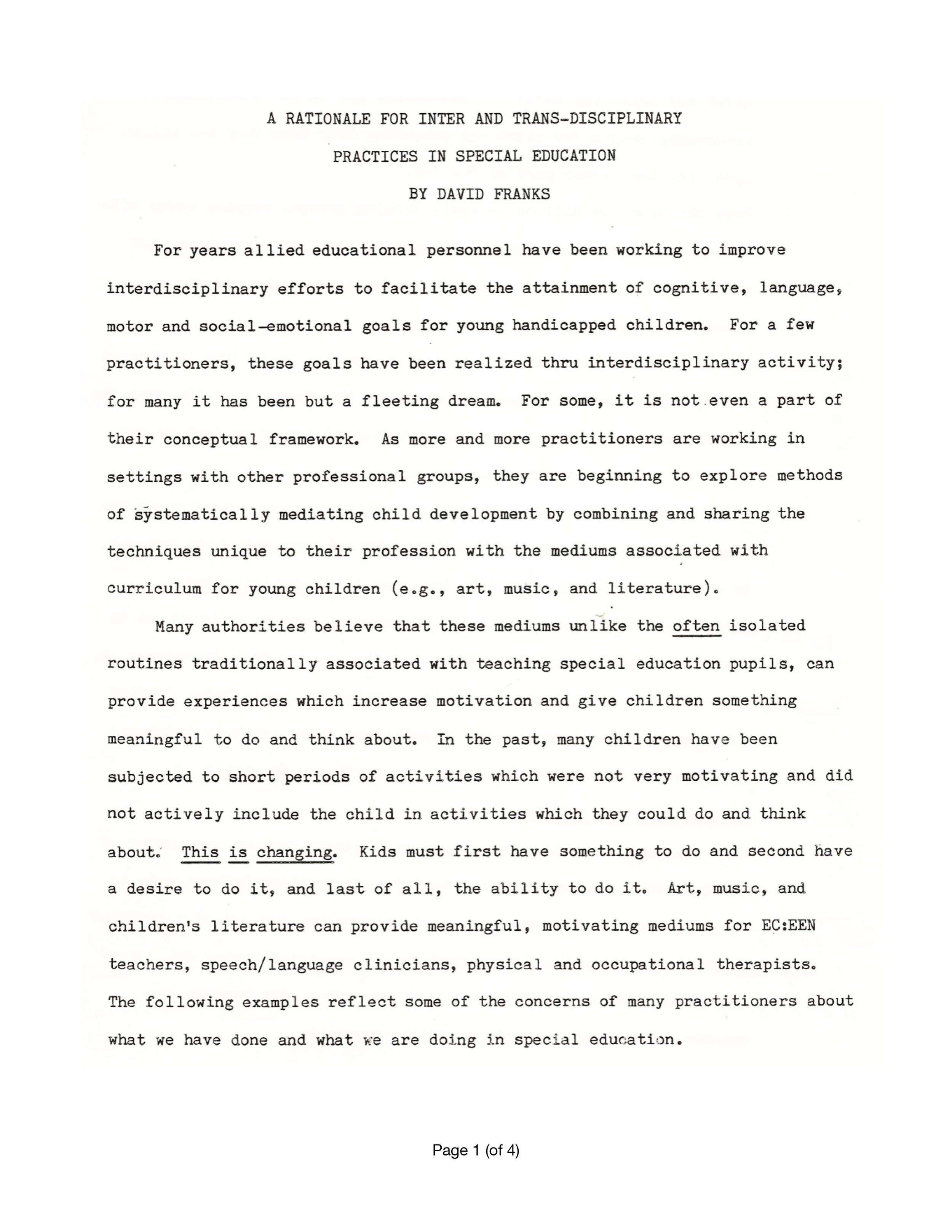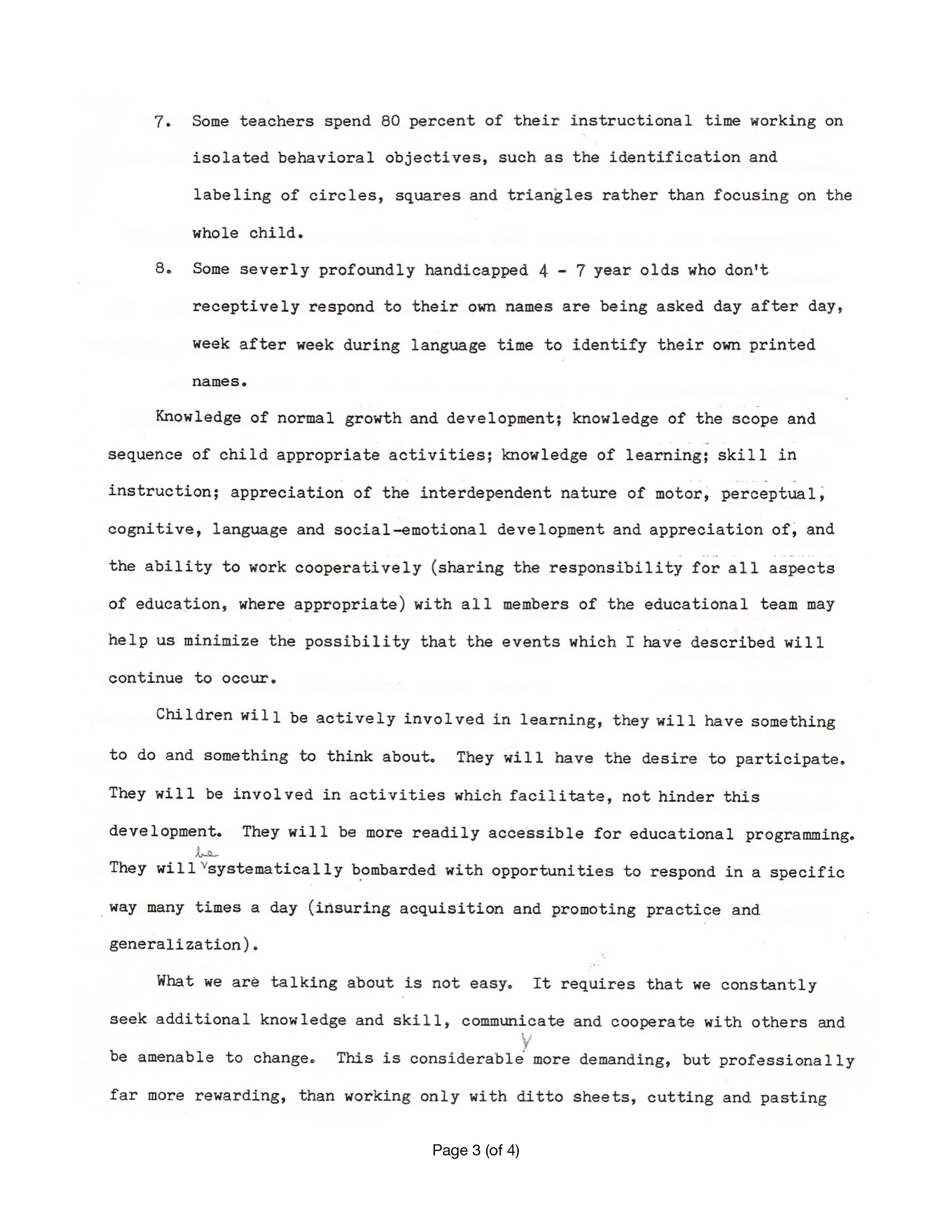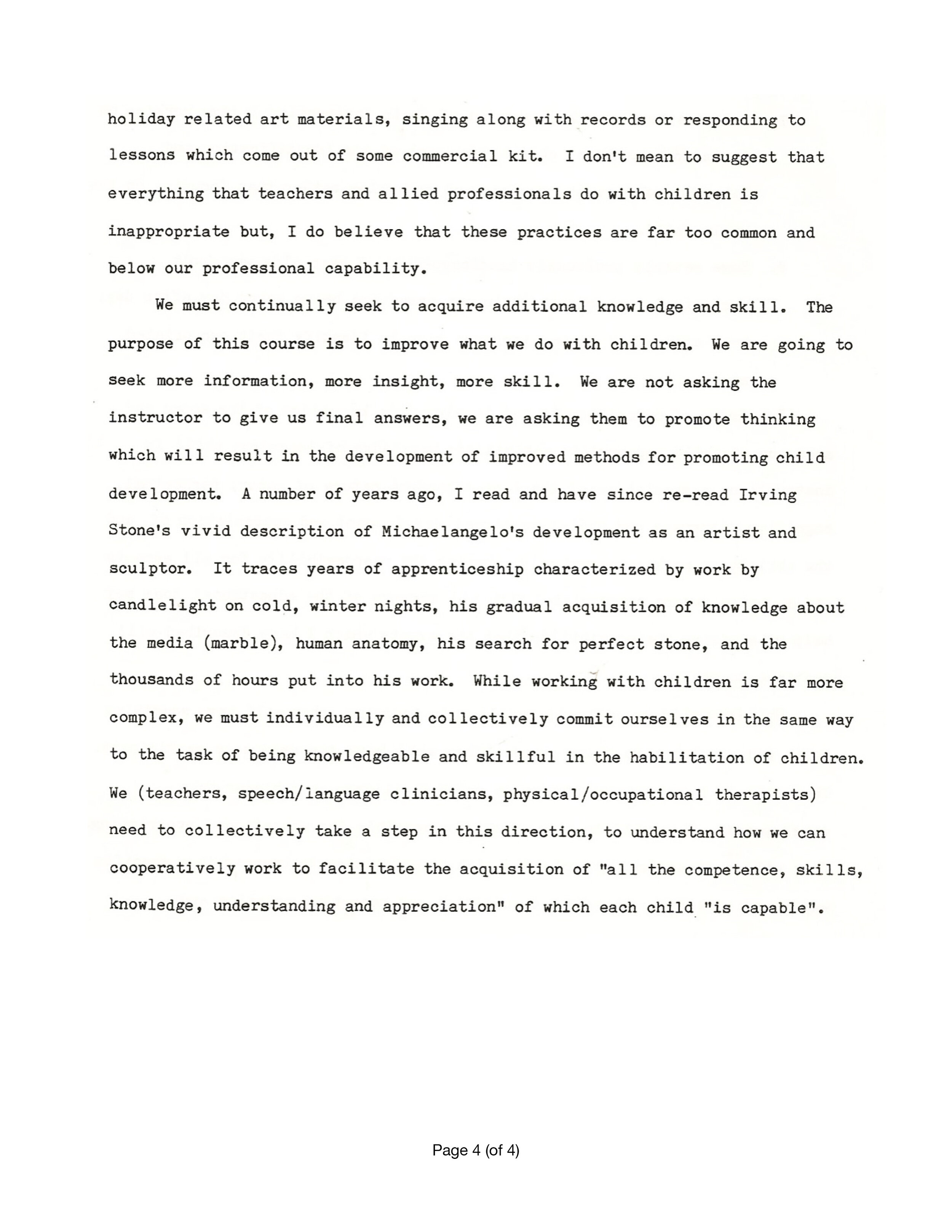training resources
Trans-disciplinary Practices
Inter-, across- or trans-disciplinary intervention team practices were introduced in the 1960's and 70's. These team practices were adopted in order to facilitate more effective education and intervention practices. My interests emerged from knowledge/opinion that isolated intervention/education (single discipline) and therapeutic practices were less effective. As noted earlier, my experiences as a hospital orderly, Navy Hospital Corpsman, and speech therapist in school programs for children with physical and multiple disabilities led me to the belief that appropriately shared methods across disciplines were necessary to facilitate development and learning . That is, trans-disciplinary practices appropriately integrated in to the practice of all the members of the team produced better practice and made for better outcomes. These intervention practices served as the foundation for our teacher education program.
PROPER POSITIONING AND SUPPORT INCREASE SUCCESS
Here an occupational and a physical therapist share methods about the importance of proper positioning and support. Use of these practices during activities is important.
The following photos were prepared to recruit, orient and train students.
a winter theme
So many things to do indoors and outdoors, to think and talk about.
“winter”theme-based curriculum activity
This teacher is implementing a Hello Time activity and simultaneously using sign language and speech.
“hello time” activity
This routine reminds children that the school day is beginning and provides them with communication and learning opportunities around greetings, day, date, weather, stories and songs.
improving stability and participation
Here the physical therapist experiments with and demonstrates the use of hands on support to improve the child’s stability while increasing the child’s ability to participate in and benefit from the learning activity.
Increasing normalization of movement
To increase normalization of movement, this physical therapist demonstrates the use of a bolster to improve balance. This helps the child as she points to the picture of a snowflake during a story-time activity.
facilitating language and speech development
Using a theme based creative art activity about “winter snow”, this speech and language clinician watches and listens as the child paints and talks with her about snow flakes. The SLP initiates, responds, reinforces and corrects as appropriate.
parental support
Here a physical therapist works with a child and coaches his mother during a pull-out session.
often-times its the
little things that make the difference
While this OT uses a theme based art activity to develop fine motor skills, she also demonstrates for the team how to use a standing device and explains how simple and subtle practices – like the placement of the paint container facilitates participation and development.
p0sitioning, support and hand over hand
techniques
An occupational therapist works hand-over-hand with a child in a pull-out session during the day.
Trans-disciplinary communication practices at work in ECsE
A classroom teacher consults with a school psychologist.
Trans-disciplinary practices at work in ECsE
The team teacher provides in-service training (i.e., professional development) for multi-disciplinary team colleagues.
parental visits are encouraged
A school psychologist is conferring with parents while they observe their daughter during a classroom visit.
communication and
outside play
A speech and language clinician is facilitating speech, language and/or communication skills with young learners during a fun, outside play period.
Back to the top | Next: Working Together >


















